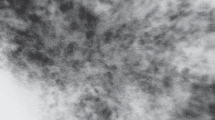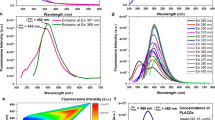Abstract
Since the nanoscale in combination with luminescent properties and prospective applications in different fields of optoelectronics and biomedicine is stimulating a growing interest towards research in the area of cadmium telluride (CdTe) quantum dots (QDs), the method of “green” synthesis of CdTe QDs with the use of the Pleurotus ostreatus mycelium culture as a biological matrix has been developed. The study of their physical and chemical characteristics has shown that the synthesized CdTe QDs are characterized by a crystalline structure and a predominantly spherical morphology and are 3–8 nm in size with the luminescence maximum within the 340–370 nm range. The study of their effects on different types of mammalian cells has shown that CdTe QDs have dose-dependent effects on mouse endothelial cells and human and rat erythrocytes, T- and B-lymphocytes, colorectal cancer cells (Colo 205), and human breast cancer cells (MCF-7). In particular, suppression of proliferative indices of endotheliocytes and an increase in the count of dead cells were observed, which indicates the cytotoxic action of nanocrystalline CdTe and its antiproliferative effect on endothelial cells. At the 5 µM concentration, CdTe QDs exhibited hemolytic activity, due to their action on erythrocytes, and affected adhesive contacts and cancer cell survivability. At the same time, human breast cancer cells (MCF-7) were more sensitive to their action. The data obtained are exclusively important for the understanding of mechanisms underlying the toxicity of CdTe QDs and for their future application in biological and biomedical research.







Similar content being viewed by others
REFERENCES
Aldughaim, M.S., Al-Anazi, M.R., Bohol, M.F., Colak, D., Alothaid, H., Wakil, S.M., Hagos, S.T., Ali, D., Alarifi, S., Rout, S., Alkahtani, S., Al-Ahdal, M.N., and Al-Qahtani, A.A., Gene expression and transcriptome profiling of changes in a cancer cell line post-exposure to cadmium telluride quantum dots: possible implications in oncogenesis, Dose-Response, 2021, vol. 19, no. 2, p. 15593258211019880. https://doi.org/10.1177/15593258211019880
Aslan, K. and Geddes, C.D., New tools for rapid clinical and bioagent diagnostics: micro waves and plasmonic nanostructures, Analyst, 2008, vol. 133, pp. 1469–1480. https://doi.org/10.1039/b808292h
Badilli, U., Mollarasouli, F., Bakirhan, N.K., Ozkan, Y., and Ozkan, S.A., Role of quantum dots in pharmaceutical and biomedical analysis, and its application in drug delivery, Trends Anal. Chem., 2020, vol. 131, p. 116013. https://doi.org/10.1016/j.trac.2020.116013
Bao, H., Na, H., Yang, Y., and Zhao, D., Biosynthesis of biocompatible cadmium telluride quantum dots using yeast cells, Nano Res., 2010a, vol. 3, pp. 481–489. https://doi.org/10.1007/s12274-010-0008-6
Bao, H., Lu, Z., Cui, X., Qiao, Y., Guo, J., Anderson, J.M., and Li, C.M., Extracellular microbial synthesis of biocompatible CdTe quantum dots, Acta Biomater., 2010b, vol. 6, pp. 3534–3541. https://doi.org/10.1016/j.actbio.2010.03.030
Blume, Y., Yemets, A., Sheremet, Y., Nyporko, A., Sulimenko, V., Sulimenko, T., and Draber, P., Exposure of beta-tubulin regions defined by antibodies on an Arabidopsis thaliana microtubule protofilament model and in the cells, BMC Plant Biol., 2010, vol. 10, p. 29. https://doi.org/10.1186/1471-2229-10-29
Blume, Y.B., Krasylenko, Y.A., Demchuk, O.M., and Yemets, A.I., Tubulin tyrosine nitration regulates microtubule organization in plant cells, Front. Plant Sci., 2013, vol. 4, p. 530. https://doi.org/10.3389/fpls.2013.00530
Borovaya, M.N., Burlaka, O.M., Yemets, A.I., and Blume, Ya.B., Biosynthesis of quantum dots and their potential applications in biology and biomedicine, in Nanoplasmonics, Nano-Optics, Nanocomposites, and Surface Studies, Fesenko, O. and Yatsenko, L., Eds., Springer-Verlag, 2015a, vol. 167, pp. 339–362. https://doi.org/10.1007/978-3-319-18543-9_24
Borovaya, M.N., Pirko, Y.V., Krupodorova, T.A., Naumenko, A.P., Blume, Ya.B., and Yemets, A.I., Biosynthesis of cadmium sulfide quantum dots using Pleurotus ostreatus (Jacq.) P. Kumm. Biotechnol. Biotechnol. Equip., 2015b, vol. 29, no. 6, pp. 1156–1163. https://doi.org/10.1080/13102818.2015.1064264
Cao, Y., The toxicity of nanoparticles to human endothelial cells, Adv. Exp. Med. Biol., 2018, vol. 1048, pp. 59–69. https://doi.org/10.1007/978-3-319-72041-8_4
Chang, Y., Cheng, X., Zhang, J., and Yu, D., Highly stable CdTe quantum dots hosted in gypsum via a flocculation-precipitation method, J. Mater. Chem. C., 2019, vol. 7, pp. 12336–12342. https://doi.org/10.1039/C9TC04412D
Chen, N., He, Y., Su, Y., Li, X., Huang, Q., Wang, H., Zhang, X., Tai, R., and Fan, C., The cytotoxicity of cadmium-based quantum dots, Biomaterials, 2012, vol. 33, pp. 1238–1244. https://doi.org/10.1016/j.biomaterials.2011.10.070
de la Нarpe, K.M., Kondiah, P.P.D., Choonara, Y.E., Marimuthu, T., Toit, L.C., and Pillay, V., The hemocompatibility of nanoparticles: a review of cell-nanoparticle interactions and hemostasis, Cells, 2019, vol. 8, no. 10, p. 1209. https://doi.org/10.3390/cells8101209
Fan, Z., Dongmei, Y., Haizhu, S., and Hao, Z., Cadmium-based quantum dots: preparation, surface modification, and applications, J. Nanosci. Nanotechnol., 2014, vol. 14, no. 2, pp. 1409–1424. https://doi.org/https://doi.org/10.1166/jnn.2014.8751
Fatima, I., Rahdar, A., Sargazi, S., Barani, M., Hassanisaadi, M., and Thakur, V.K., Quantum dots: synthesis, antibody conjugation, and HER2-receptor targeting for breast cancer therapy, J. Funct. Biomater., 2021, vol. 12, p. 75. https://doi.org/10.3390/jfb12040075
Garmanchuk, L.V., Borovaya, M.N., Nehelia, A.O., Inomistova, M., Khranovska, N.M., Tolstanova, G.M., Blume, Ya.B., and Yemets, A.I., CdS quantum dots obtained by “green” synthesis: comparative analysis of toxicity and effects on the proliferative and adhesive activity of human cells, Cytol. Genet., 2019, vol. 53, no. 2, pp. 132–142. https://doi.org/10.3103/S0095452719020026
Gil, H.M., Price, T.W., Chelani, K., Bouillard, J.G., Calaminus, S.D., Stasiuk, G.J., NIR-quantum dots in biomedical imaging and their future, iScience, 2021, vol. 24, no. 3, p. 102189. https://doi.org/10.1016/j.isci.2021.102189
Green, M., Haigh, S.J., Lewis, E.A., Sandiford, L., Burkitt-Gray, M., Fleck, R., Vizcay-Barrena, G., Jensen, L., Mirzai, H., Curry, R.J., and Dailey, L.-A., The biosynthesis of infrared-emitting quantum dots in Allium fistulosum, Sci. Rep., 2016, vol. 6, p. 20480. https://doi.org/10.1038/srep20480
Jan, S.N., Somanna, P., and Patil, A.B., Application of quantum dots in drug delivery, Nanosci. Nanotech. Asia, 2022, vol. 12, no. 1, p. e070921191305. https://doi.org/10.2174/2210681211666210211092823
Janiszewska, M., Primi, M., and Izard, T., Cell adhesion in cancer: Beyond the migration of single cells, J. Biol. Chem., 2020, vol. 295, no. 8, pp. 2495–2505. https://doi.org/10.1074/jbc.REV119.007759
Jha, S., Mathur, P., Ramteke, S., and Jain, N.K., Pharmaceutical potential of quantum dots, Artif. Cells Nanomed. Biotechnol., 2018, vol. 46, no. 1, pp. 57–65. https://doi.org/10.1080/21691401.2017.1411932
Jigyasu, A.K., Siddiqui, S., Jafri, A., Arshad, M., Lohani, M., and Khan, I.A., Biological synthesis of CdTe quantum dots and their anti-proliferative assessment against prostate cancer cell line, J. Nanosci. Nanotechnol., 2020, vol. 20, no. 6, pp. 3398–3403. https://doi.org/10.1166/jnn.2020.17316
Kadim, A.M., Applications of cadmium telluride (CdTe) in nanotechnology, in Nanomaterials – Toxicity, Human Health and Environment, Clichici, S., Filip, A., and do Nascimento, G.M., Eds., Intech, 2019, pp. 1–11. https://doi.org/10.5772/intechopen.85506
Kairdolf, B.A., Smith, A.M., Stokes, T.H., Wang, M.D., Young, A.N., and Nie, S., Semiconductor quantum dots for bioimaging and biodiagnostic applications, Ann. Rev. Anal. Chem., 2013, vol. 6, no. 1, p. 143. https://doi.org/10.1146/annurev-anchem-060908-155136
Kapush, O.A., Trishchuk, L.I., Tomashik, V.N., and Tomashik, Z.F., Effect of thioglycolic acid on the stability and photoluminescence properties of colloidal solutions of CdTe nanocrystals, Inorg. Mater., 2014, no. 50, pp. 13–18. https://doi.org/10.1134/S0020168514010105
Katubi, K.M., Alzahrani, F.M., Ali, D., and Alarif, S., Dose-and duration-dependent cytotoxicity and genotoxicity in human hepato carcinoma cells due to CdTe QDs exposure, Human Exp. Toxicol., 2019, vol. 38, no. 8, pp. 914–926. https://doi.org/10.1177/0960327119843578
Kumar, P., Semiconductor (CdSe and CdTe) quantum dot: Synthesis, properties and applications, Materialstoday: Proc., 2022, vol. 51, no. 6, pp. 900–904. https://doi.org/10.1016/j.matpr.2021.06.281
Liu, N. and Tang, M., Toxicity of different types of quantum dots to mammalian cells in vitro: An update review, J. Hazard. Mater., 2020, vol. 399, p. 122606. https://doi.org/10.1016/j.jhazmat.2020.122606
Matea, C.T., Mocan, T., Tabaran, F., Pop, T., Mosteanu, O., Puia, C., Iancu, C.,and Mocan, L., Quantum dots in imaging, drug delivery and sensor applications, Int. J. Nanomed., 2017, vol. 12, pp. 5421–5431. https://doi.org/10.2147/IJN.S138624
Matea, C.T., Mocan, T., Tabaran, F., Pop, T., Mosteanu, O., Puia, C., Iancu, C., and Mocan, L., Quantum dots in imaging, drug delivery and sensor applications, Int. J. Nanomed., 2017, vol. 12, pp. 5421–5431. https://doi.org/10.2147/IJN.S138624
Naderi, S., Zare, H., Taghavinia, N., Irajizad, A., Aghaei, M., and Panjehpour, M., Cadmium telluride quantum dots induce apoptosis in human breast cancer cell lines, Toxicol. Ind. Health, 2018, vol. 34, pp. 339–352. https://doi.org/10.1177/0748233718763517
Nel, A., Xia T., Madler, L., and Li, N., Toxic potential of materials at the nanolevel, Science, 2006, vol. 311, pp. 622–627. https://doi.org/10.1126/science.1114397
Nguyen, K.C., Seligy, V.L., and Tayabali, A.F., Cadmium telluride quantum dot nanoparticle cytotoxicity and effects on model immune responses to Pseudomonas aeruginosa, Nanotoxicology, 2013, vol. 7, pp. 202–211. https://doi.org/10.3109/17435390.2011.648667
Osovsky, R., Kloper, V., Kolny-Olesiak, J., Sashchiuk, A., and Lifshitz, E., Optical properties of CdTe nanocrystal quantum dots, grown in the presence of Cd0 nanoparticles, J. Phys. Chem. C, 2007, vol. 111, pp. 10841–10847. https://doi.org/10.1021/jp071979e
Pei, J., Zhu, H., Wang, X., Zhang, H., and Yang, X., Synthesis of cysteamine-coated CdTe quantum dots and its application in mercury (II) detection, Anal. Chim. Acta, 2012, vol. 757, pp. 63–68. https://doi.org/10.1016/j.aca.2012.10.037
Ruzycka-Ayoush, M., Kowalik, P., Kowalczyk, A., Bujak, P., Nowicka, A.M., Wojewodzka, M., Kruszewski, M., and Grudzinski, I.P., Quantum dots as targeted doxorubicin drug delivery nanosystems in human lung cancer cells, Cancer Nanotechnol., 2021, vol. 12, p. 8. https://doi.org/10.1186/s12645-021-00077-9
Sadaf, A., Zeshan, B., Wang, Z., Cui, Y., et al., Toxicity evaluation of hydrophilic CdTe quantum dots and CdTe/SiO2 nanoparticles in mice, J. Nanosci. Nanotechnol., 2012, vol. 12, no. 11, pp. 8287–8292. https://doi.org/10.1166/jnn.2012.6667
Sahoo, S.L., Liu, C.-H., Kumari, M., Wu, W.-C., and Wang, C.-C., Biocompatible quantum dot-antibody conjugate for cell imaging, targeting and fluorometric immunoassay: crosslinking, characterization and applications, RSC Adv., 2019, vol. 9, pp. 32791–32803. https://doi.org/10.1039/c9ra07352c
Syed, A. and Ahmad, A., Extracellular biosynthesis of CdTe quantum dots by the fungus Fusarium oxysporum and their anti-bacterial activity, Spectrochim. Acta, Part A, 2013, vol. 106, pp. 41–47. https://doi.org/10.1016/j.saa.2013.01.002
Talapin, D.V., Haubold, S., Rogach, A.L., Kornowski, A., Haase, M., and Weller, H., A novel organometallic synthesis of highly luminescent CdTe nanocrystals, J. Phys. Chem. B, 2001, vol. 105, pp. 2260–2263. https://doi.org/10.1021/jp003177o
Yan, M., Zhang, Y., Xu, K., Fu, T., Qin, H., and Zheng, X., An in vitro study of vascular endothelial toxicity of CdTe quantum dots, Toxicology, 2011, vol. 282, pp. 94–103. https://doi.org/10.1016/j.tox.2011.01.015
Yemets, A., Stelmakh, O., and Blume, Y.B., Effects of the herbicide isopropyl-N-phenyl carbamate on microtubules and MTOCs in lines of Nicotiana sylvestris resistant and sensitive to its action, Cell Biol. Int., 2008, vol. 32, no. 6, pp. 623–629. https://doi.org/10.1016/j.cellbi.2008.01.012
Yu, Y., Xu, L., Chen, J., Gao, H., Wang, S., Fang, J., and Xu, S., Hydrothermal synthesis of GSH–TGA cocapped CdTe quantum dots and their application in labeling colorectal cancer cells, Colloids Surf., B, 2012, vol. 95, pp. 247–253. https://doi.org/10.1016/j.colsurfb.2012.03.011
Zhang, Y., Kaji, N., Tokeshi, M., and Baba, Y., Nanobiotechnology: quantum dots in bioimaging, Exp. Rev. Proteomics, 2007, vol. 4, no. 4, pp. 565–572. https://doi.org/10.1586/14789450.4.4.565
Zhao, M.X. and Zhu, B.J., The research and applications of quantum dots as nano-carriers for targeted drug delivery and cancer therapy, Nanoscale Res. Lett., 2016, vol. 11, p. 207. https://doi.org/10.1186/s11671-016-1394-9
Funding
The research was financially supported by the State Foundation for Fundamental Research and the National Academy of Sciences of Ukraine (budget programme 6541030) .
Author information
Authors and Affiliations
Corresponding author
Ethics declarations
The authors declare that they have no conflicts of interest. This article does not contain any studies involving animals or human participants performed by any of the authors.
About this article
Cite this article
Garmanchuk, L., Borova, M., Kapush, O. et al. Green Synthesis of CdTe Quantum Dots and Their Effect on Human and Animal Cells. Cytol. Genet. 57, 229–238 (2023). https://doi.org/10.3103/S0095452723030040
Received:
Revised:
Accepted:
Published:
Issue Date:
DOI: https://doi.org/10.3103/S0095452723030040




